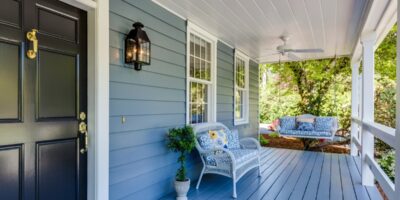Exploring Historic Craftsman House Colors
The Craftsman style, which emerged during the early 20th century, is cherished for its simplicity and attention to detail. An important aspect of this architectural style is its color palette. Craftsman homes are known for earthy tones that blend seamlessly with their surroundings. When choosing colors for a historic Craftsman house, understanding the traditional palette can enhance its architectural beauty.

The Origins of Craftsman Colors
The Arts and Crafts movement influenced the rise of the Craftsman style. This design philosophy emphasized harmony with the natural environment. As a result, the colors chosen for these homes often drew from nature. Soft greens, browns, and muted blues were favored, reflecting the earthy landscapes these homes often occupied. The intent was to create a harmonious balance between the built environment and nature.
Signature Color Palettes
Traditional Craftsman colors focus on muted and natural hues. The goal is to reflect the flora and fauna surrounding the home. Among popular choices are olive and sage greens, which can mimic the color of trees and shrubs. Deep browns connect visually with wood and earth. Rich reds and ochre yellows draw from autumn landscapes. Blues and grays in muted tones add variety without overpowering. This approach ensures the home remains unobtrusive and part of its environment.
Key Colors and Their Impact
- Olive Green: This color brings a soothing and calming element, often used for exterior walls to blend with garden settings.
- Warm Brown: Shades of brown offer a robust yet organic feel, perfect for accents or main wall colors.
- Rustic Red: Red is used sparingly but effectively to highlight architectural features like window frames and doors.
- Ochre Yellow: A cheerful yet natural highlight that works well on trims and details.
- Muted Blue: Soft blues can add a touch of coolness and are frequently used for porch ceilings and railings.
- Stone Gray: Grays serve as neutral bases, complementing other natural colors without clashing.
Choosing the Right Combinations
When selecting colors for a Craftsman house, balance is key. Layering complementary colors can emphasize the unique features of a home. Contrasts are often subtle. Trim and accents should complement the main wall color without stark differences. A warm brown exterior can be paired with cream or light gray trim. A moss green home could feature deeper green accents on eaves and frames. Interiors, too, should reflect these natural palettes. Inside, these same principles apply, creating a cohesive look from exterior to interior.
Considerations for Modern Updates
While staying true to historic colors is important, modern materials and finishes offer new opportunities. Paint technology has advanced, offering colors that stay vibrant longer and resist weathering. Some homeowners may incorporate historical colors in new finishes, like low-VOC paints, enhancing durability while maintaining authenticity. Exploring variations within the traditional palette allows for personalization without losing the essence of the Craftsman aesthetic.
Preserving Authenticity
For those restoring or renovating a historic Craftsman house, research is essential. Investigating the original color schemes of the property can guide restorations. Historical societies and archives can be valuable resources. Photographs, if available, are key. They provide insight into authentic materials and colors used. This research ensures that updates are sympathetic to the home’s original character. When in doubt, consulting with experts in historic preservation can provide guidance on matching colors and materials accurately.
Conclusion
Understanding the color traditions of Craftsman homes enriches the appreciation and preservation of these architectural treasures. The natural palette not only enhances the aesthetic of the home but also honors the movement’s philosophical roots in simplicity and connection to the natural world. As homeowners and restorers strive to maintain these beautiful structures, staying informed about traditional color choices ensures their timeless elegance endures.




Subscribe for Updates
Get the latest articles delivered to your inbox.
We respect your privacy. Unsubscribe anytime.